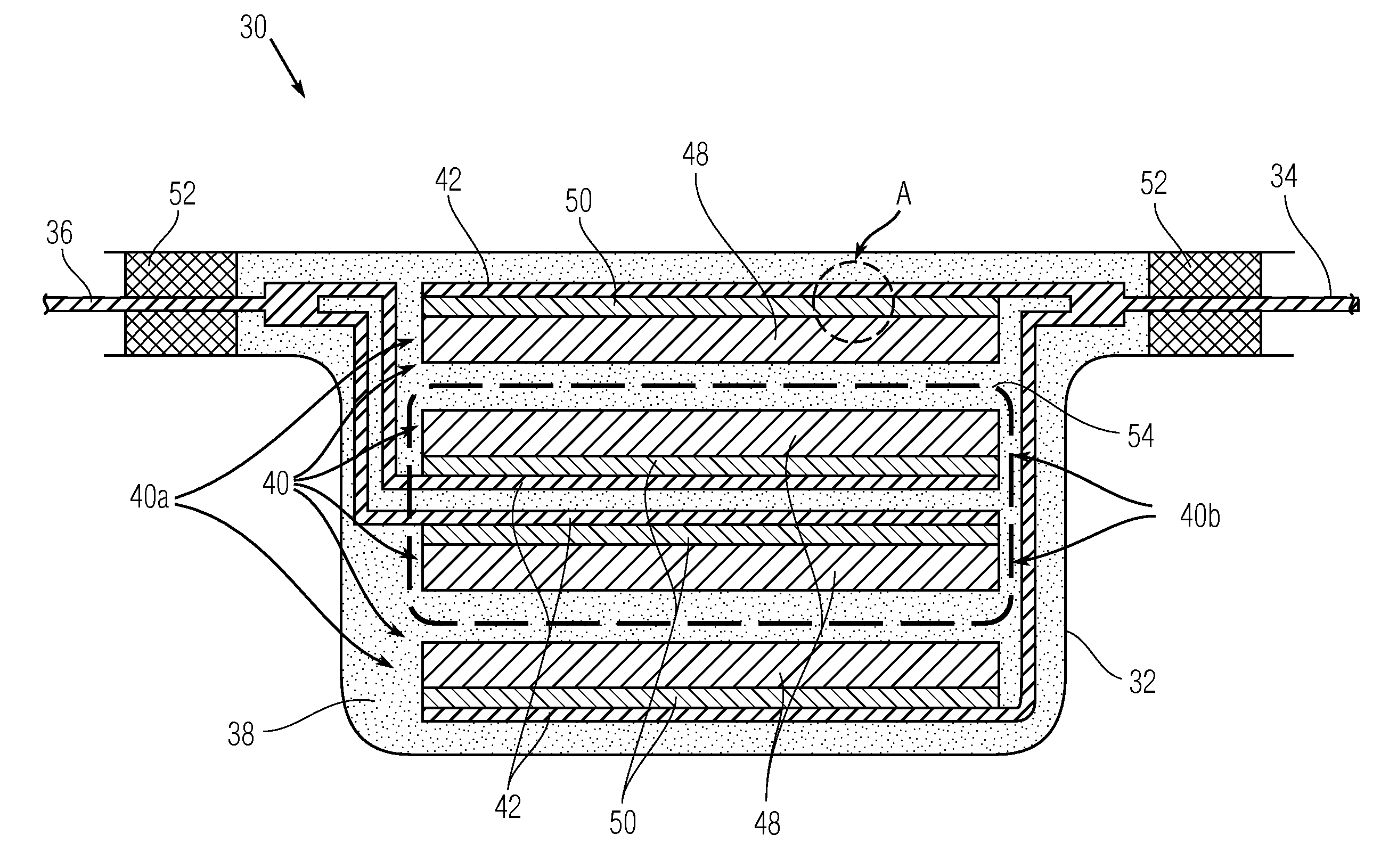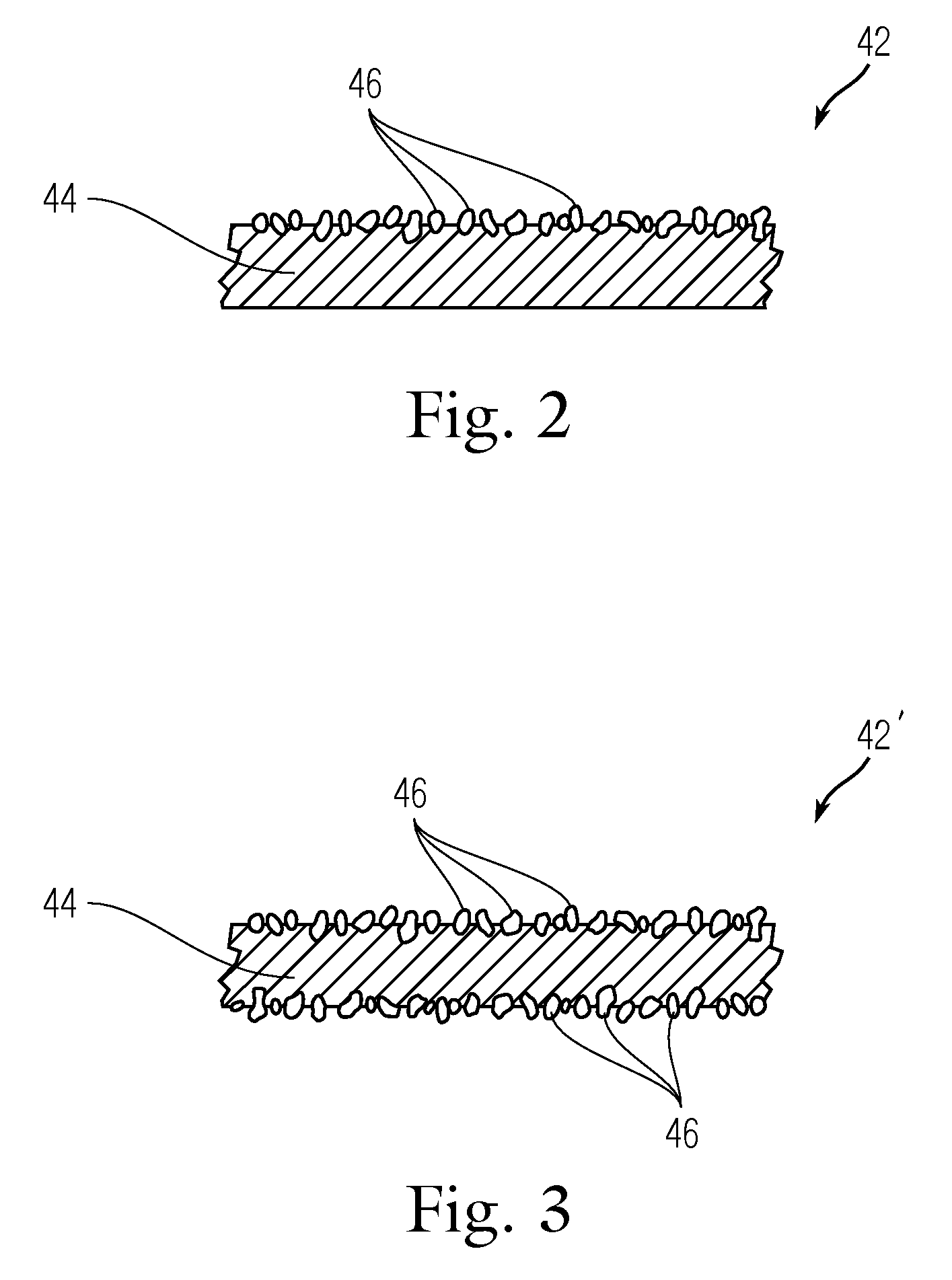Electrochemical double layer capacitor
a double-layer capacitor and electrochemical technology, applied in the direction of hybrid capacitor terminals, electrolytic capacitors, hybrid capacitor terminals, etc., can solve the problems of low edlc efficiency, low output power density, and availability of insulating oxide films on metals
- Summary
- Abstract
- Description
- Claims
- Application Information
AI Technical Summary
Problems solved by technology
Method used
Image
Examples
example 1
[0054]A nanoporous carbon powder, FILTRASORB-400 (available form Calgon Carbon Corp. of Pittsburgh, Pa., U.S.A.), produced from a natural bituminous coal was milled, suspended in a hot aqueous solution of oxalic acid and stirred for 2 hours. The suspension was then filtered and washed with a diluted solution of oxalic acid and dried. The washed product was heated for 2 hours under inert atmosphere at 850° C. in an oven to obtain a nanoporous carbon powder. The FILTRASORB-400 and the obtained nanoporous carbon powder were analyzed for total ash content and iron content in the ash. The latter was then recalculated to determine the iron content in the FILTRASORB-400 and in the obtained activated carbon powder. The obtained results are shown below:
Ash, wt %Fe, wt %FILTRASORB-4005.50.36Obtained Activated Carbon50.12Powder
[0055]From experimental data on sorption / desorption of nitrogen gas using an ASAP 2000M unit (available from Micromeritics of Norcross, Ga., U.S.A.), it was determined t...
example 3
[0057]An aluminum foil having a thickness of about 60 micron was modified by fusing graphite particles in the same manner as described in Example 2. The obtained nanoporous carbon powder of Example 1 was mixed with a polytetrafluoroethylene (PTFE) binder, the binder content in the mixture being about 7 wt. %. The mixture was then rolled and pressed on the surface of the modified aluminum foil to form a flat nanoporous carbon layer having a thickness of about 100 microns. The resistance of the polarizable electrode was measured using the four-connection method device as described in Example 2. The results of measurements of the polarizable electrode resistance are presented in Table 1, line 1 and in Table 2, line 2.
example 4
[0058]An aluminum foil having a thickness of about 20 microns was modified by fusing graphite particles in the same manner as described in Example 2. An nanoporous carbon powder having a thickness of about 100 microns was made in the same manner as described in Example 3. A 3 micron thick layer of acetylene black having 20 wt. % of PVDF binder was spread and dried on the surface of the modified aluminum foil to form a conductive primary coating (conductive layer 50, FIG. 5). The nanoporous carbon powder was then applied to the primary coating to form a polarizable electrode. The resistance of the polarizable electrode was measured using the four-connection method device in the same manner as described in
PUM
 Login to View More
Login to View More Abstract
Description
Claims
Application Information
 Login to View More
Login to View More - R&D
- Intellectual Property
- Life Sciences
- Materials
- Tech Scout
- Unparalleled Data Quality
- Higher Quality Content
- 60% Fewer Hallucinations
Browse by: Latest US Patents, China's latest patents, Technical Efficacy Thesaurus, Application Domain, Technology Topic, Popular Technical Reports.
© 2025 PatSnap. All rights reserved.Legal|Privacy policy|Modern Slavery Act Transparency Statement|Sitemap|About US| Contact US: help@patsnap.com



